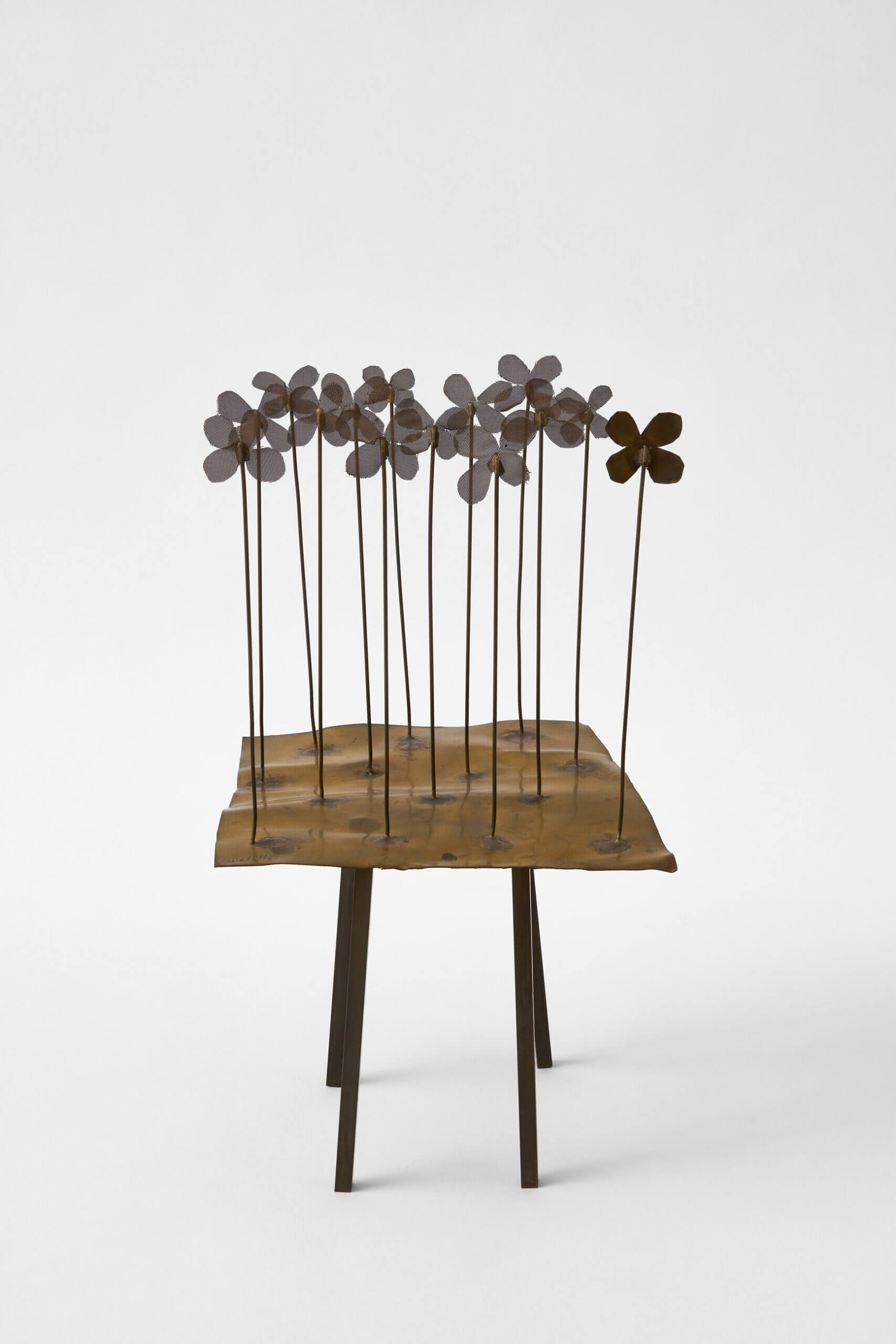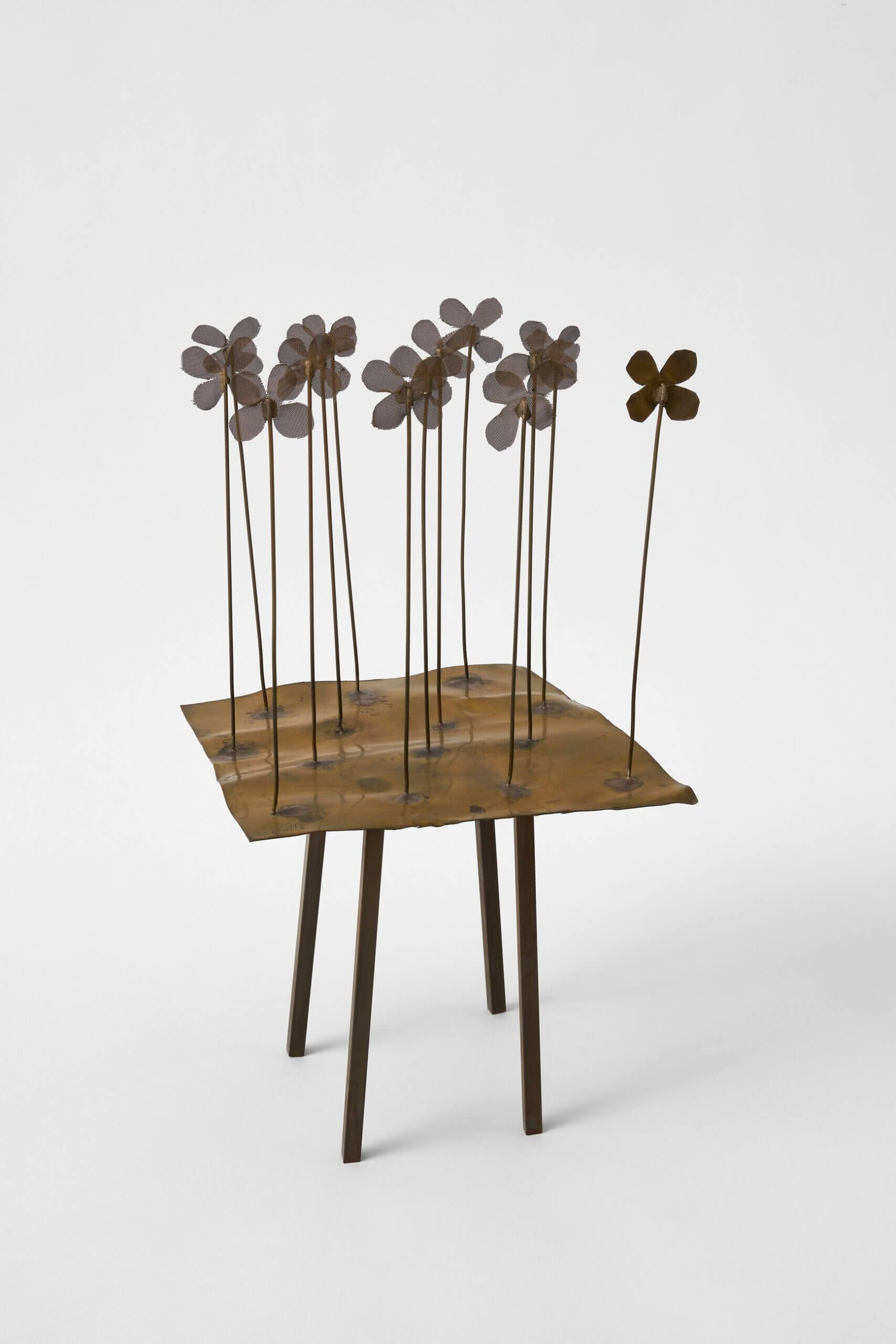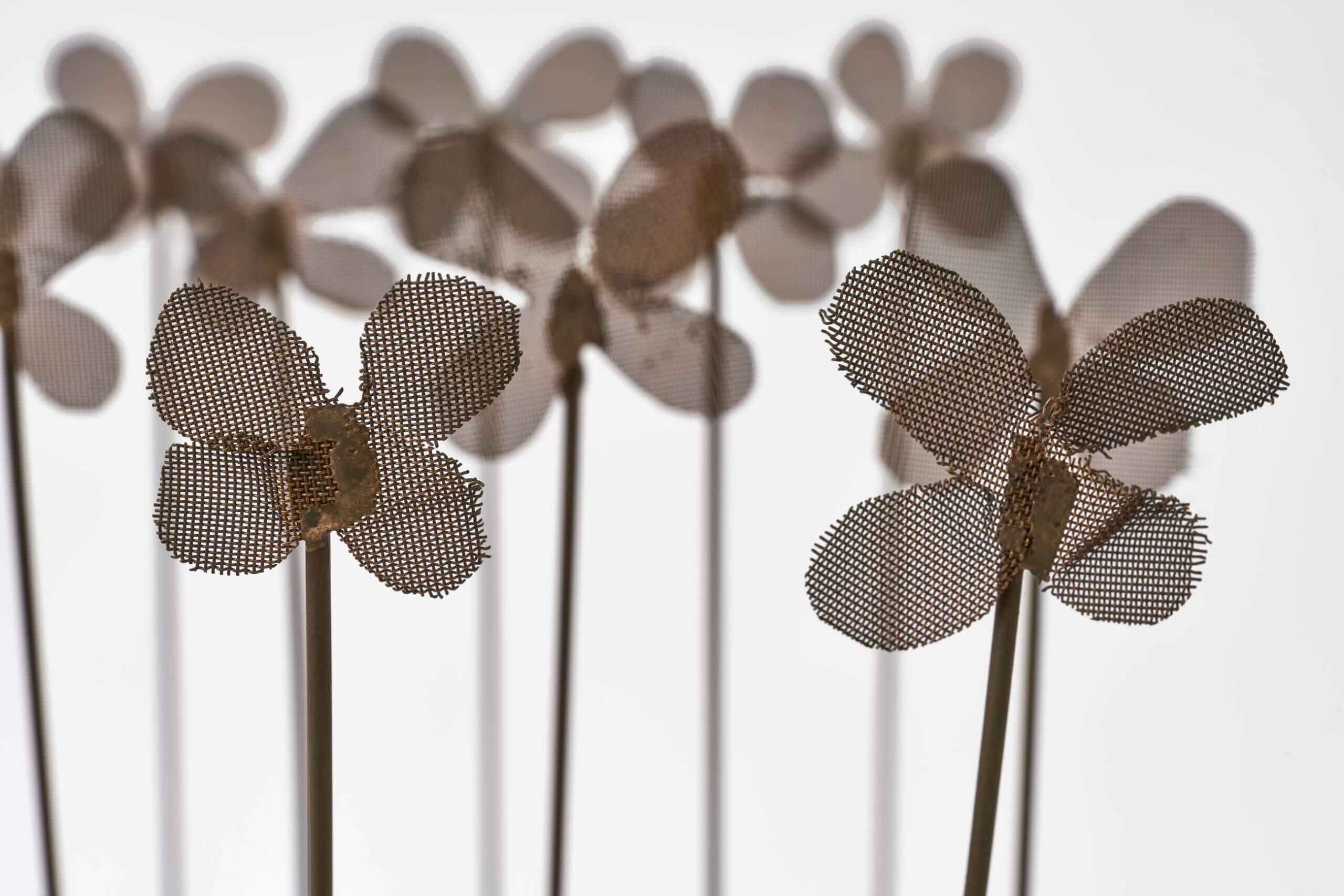
Fausto Melotti
Campo di violette <br>(Violets’ Field)
Campo di violette
(Violets’ Field)
1968 Brass Unique 33.2 x 17.2 x 17.2 cm / 13 1/8 x 6 3/4 x 6 3/4 in
EUR 135,000
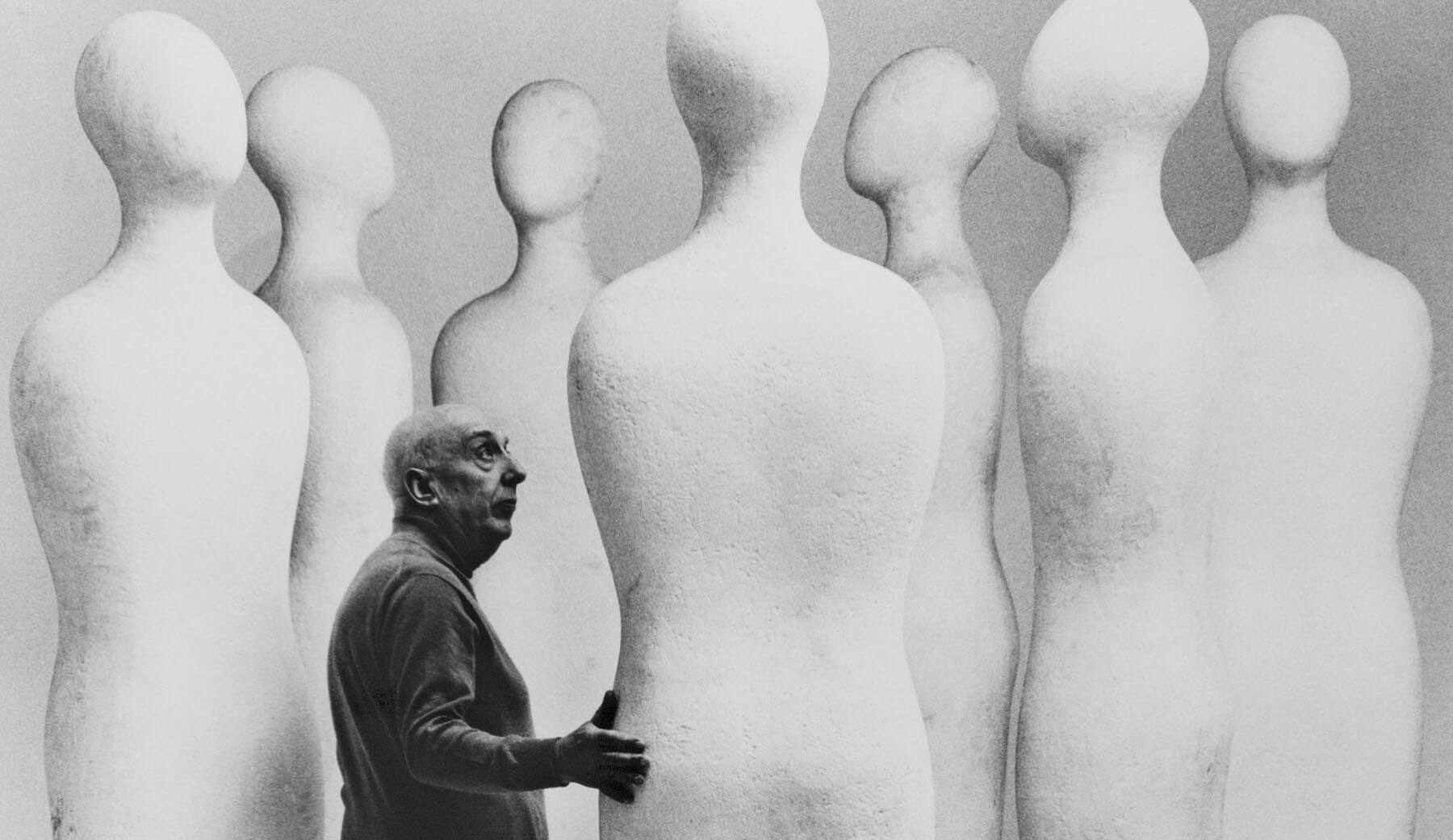
Fausto Melotti
Italian sculptor, painter and poet, Fausto Melotti is considered a pioneer of Italian art and is acknowledged for his unique contribution to the development of mid-century European Modernism. Coming of age in prewar Milan, and living through the horrors of the Second World War, Melotti metabolized wartime devastation in his work by returning to Renaissance principles of harmony, order, geometry, and musical structure, which he integrated into a highly personal yet universally accessible artistic language that expresses the full range of emotional experiences in modern human existence.
Campo di violette (Violets’ Field)
A pioneer of Italian art, Fausto Melotti trained as a figurative artist studying under Italy’s leading Symbolist sculptor Adolfo Wildt at the Accademia di Brera in Milan. In the following decade he gradually shifted his focus to abstraction and a new non-objective art. Active in the artistic milieu of pre-war Milan, Melotti developed influential friendships with the Rationalist architects of Gruppo 7 and the abstract artists who gravitated around Galleria del Milione. With his friend Lucio Fontana, he joined the Abstraction-Création movement, developing firm ideas about non-figurative art.
Melotti’s work from the 1960s is characterized by rhythmic geometric forms with an underlying humanist narrative. After decades of experience with terracotta and ceramics, in 1959 he started experimenting with his first brass sculptures, sometimes adding parts in bronze or glazed ceramics, later with pieces of cloth, wood, fragments of clay and cardboard, moving freely among mediums. Brass as a material is frequently used in decoration for its gold-like appearance, softness and malleability and Melotti will continue to use it with virtuosity up until his later production in the 1980s. He often adopts it for smaller and more intimate pieces including the so-called ‘bozzetti’, models for larger sculptures or editions.
Sculptures produced from this period often function as improvisations of fabulous figures and mythical landscapes, “Campo di violette” from 1968 is a superb example. For Germano Celant, one of the main scholars of Melotti’s work ever since he participated in the 1966 Venice Biennale, “the metal sculptures produced by Melotti from 1959 to 1986, look like fantastic harps, capable with their optical and plastic ‘sound’ of inviting us to an ecstatic dance.”
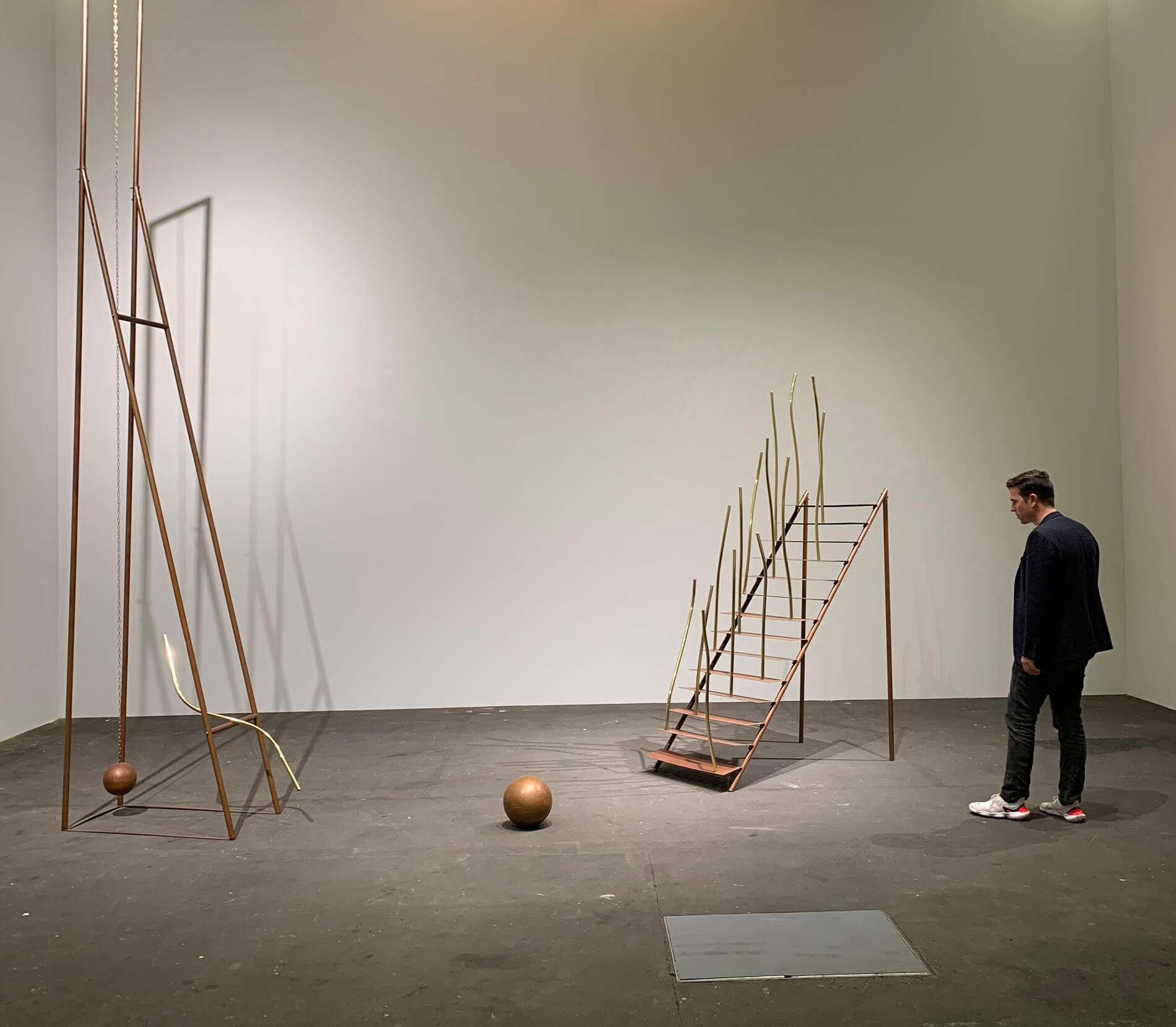
Celebrating Basel Basel
Fausto Melotti’s work ‘La Sibilla (The Sibyl)’ (1981) featured in the 2019 edition of Art Basel Unlimited. This was Gianni Jetzer’s eighth and final year as curator of the fair's Unlimited sector that presents installations, videos and experiments that challenge what it means to be a viewer.
